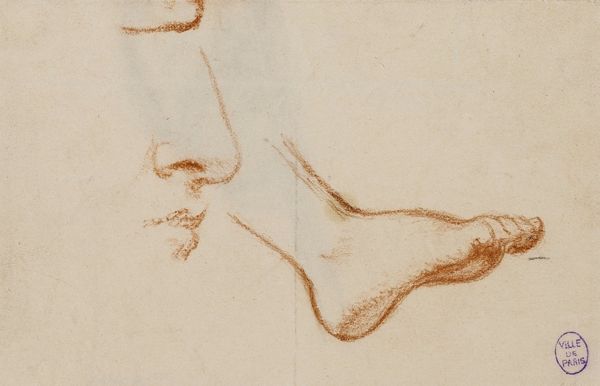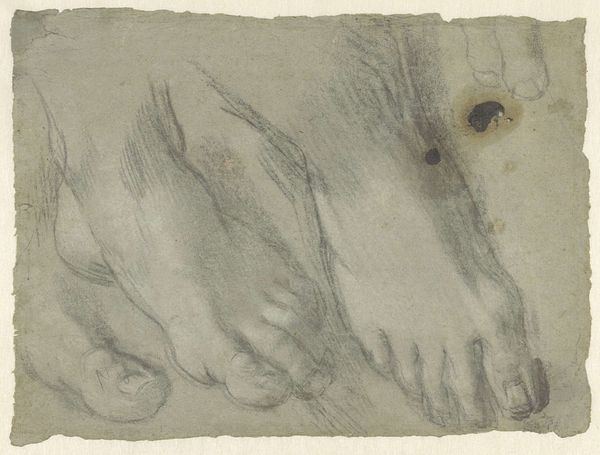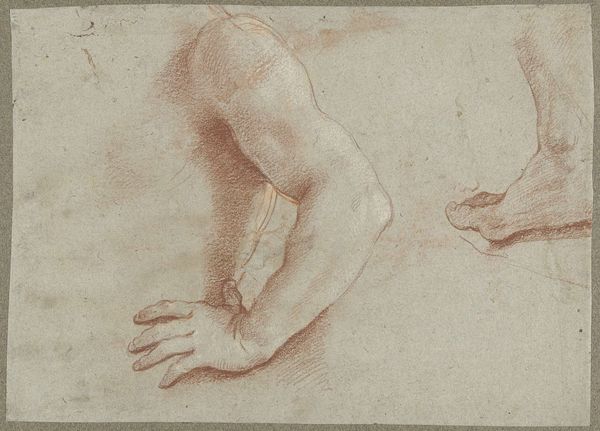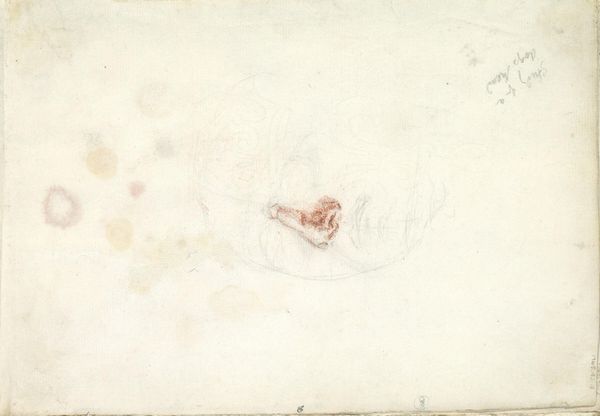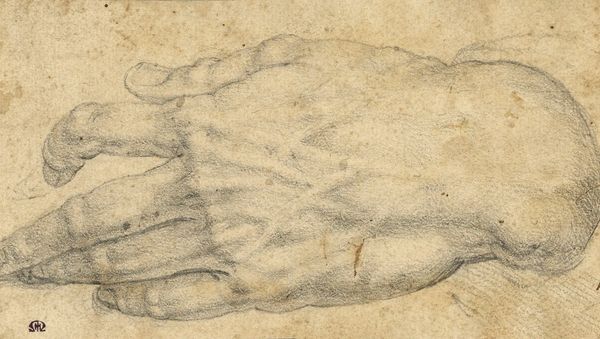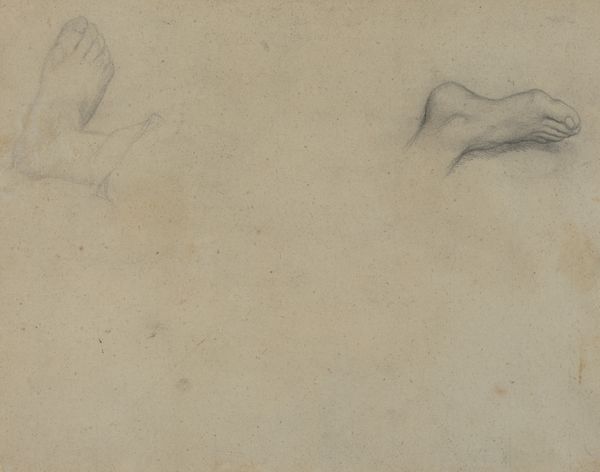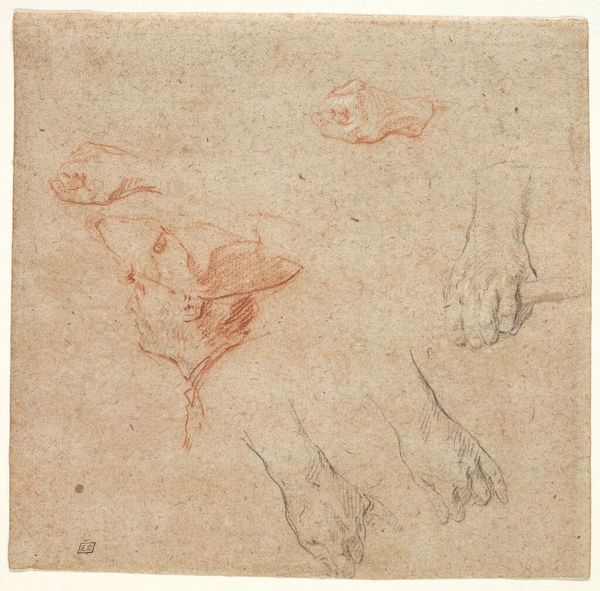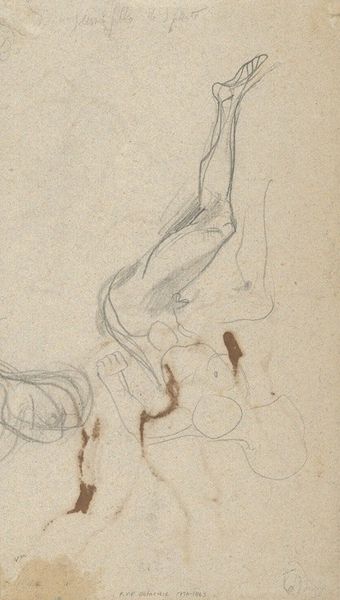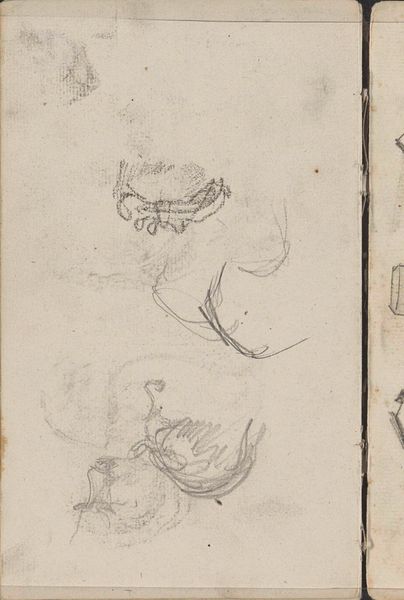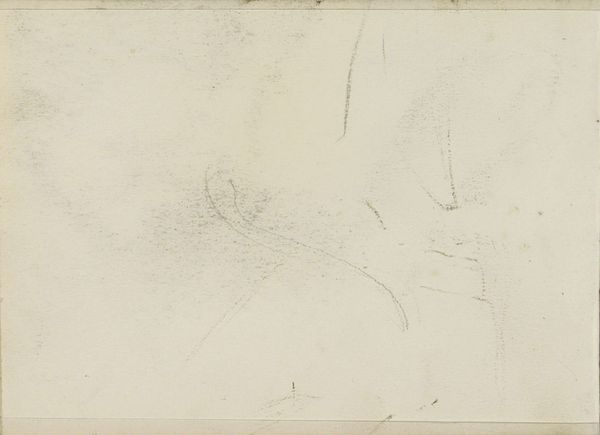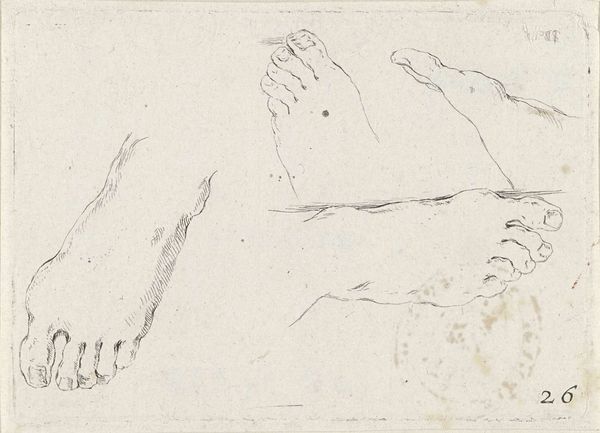
Studies van voeten, hoofd en schouders van een op de rug geziene man 1608 - 1616
0:00
0:00
guidoreni
Rijksmuseum
drawing, paper, dry-media
#
portrait
#
drawing
#
figuration
#
paper
#
11_renaissance
#
dry-media
#
line
#
academic-art
#
italian-renaissance
Dimensions: height 168 mm, width 276 mm
Copyright: Rijks Museum: Open Domain
Editor: Here we have Guido Reni’s "Studies van voeten, hoofd en schouders van een op de rug geziene man", created sometime between 1608 and 1616. It’s a red chalk drawing on paper. It feels like a glimpse into the artist's process, almost like a workshop experiment. What jumps out to you about it? Curator: It's interesting to see this not just as a preparatory drawing, but as an object of labor itself. Reni painstakingly rendered these anatomical studies. How do you think the availability and cost of materials – paper, chalk – might have impacted his artistic choices and the kinds of studies he undertook? Editor: That’s a great point! I hadn't considered the economic side. It’s easy to just see the art, not the… commodity? Did artists at the time often create so many studies? Curator: Absolutely. Academic training during the Italian Renaissance revolved around mastering the human form. The production of drawings like these speaks volumes about the artistic labour involved. They were constantly refining their craft through meticulous observation. These sketches weren't just disposable steps but valuable resources, sometimes reused, resold, or influencing workshop practices. Look closely – the types of paper and the chalk itself mattered greatly. Editor: So it’s not just about the beautiful final painting, but all this work - all this production - that got it there. That changes things, putting emphasis on practice as work. Curator: Precisely! The "behind-the-scenes" element becomes part of the story, demystifying the notion of effortless genius and highlighting the artist’s work and access to certain material. Editor: It’s really interesting to consider it through that lens – a whole different appreciation for the work involved! Thanks for that insight. Curator: My pleasure. Hopefully, it highlights the importance of process and material context in Renaissance art production!
Comments
No comments
Be the first to comment and join the conversation on the ultimate creative platform.
